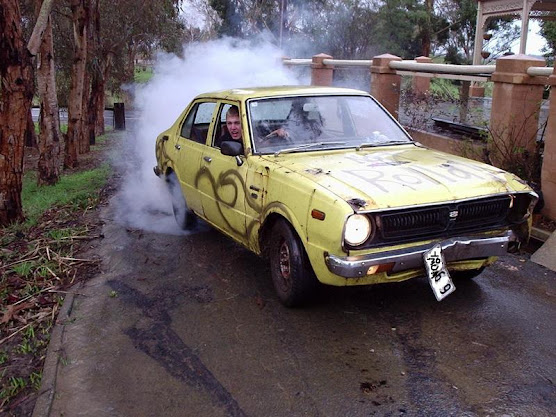Canon (pronounced kan-uhn)
(1) An ecclesiastical rule or law enacted by
a council or other competent authority and, in the Roman Catholic Church,
approved by the pope; the body of ecclesiastical law.
(2) In certain denominations in Christianity, one of a body of dignitaries or
prebendaries attached to a cathedral or a collegiate church; a member of the
chapter of a cathedral or a collegiate church.
(3) In the Roman Catholic Church, one of the
members (canons regular) of certain religious orders. Historically, a member of either the Augustinian
or Premonstratensian, living communally as monks but performing clerical duties.
(4) The body of rules, principles, or
standards accepted as axiomatic and universally binding in a field of study or
art.
(5) A fundamental principle or general rule.
(6) A standard; criterion.
(7) The books of the Bible recognized by any
Christian church as genuine and inspired.
(8) Any officially recognized set of sacred
books.
(9) A piece of music in which an extended
melody in one part is imitated successively in one or more other parts (fugal).
(10) A size of printer's type (historically used for the printing of church canons), equal to 48
point (archaic).
(11) In hymnography, a kind of hymn in
Eastern Orthodox Christianity
(12) In bell-founding, one or more hanging
loops cast integrally with the crown.
(13) In Roman law, a rent or stipend payable at some regular time, usually annually).
(14) In cooking, the alternative spelling of cannon (rolled and filleted loin of meat).
1150-1200: In ecclesiastical use, from the Middle English canonicus (shared with French), a back formation from the Old English canōnic (one under rule), from the Medieval Latin canōnicus (of or under rule). The word in Ancient Greek was kanōnikós from kanon (any straight rod or bar; rule; standard of excellence), possibly from kanna (reed). As applied to the clergy, the title dates from circa 1200, from the Anglo-French canun, from the Old North French canonie (which is Modern French is chanoine), from the Church Latin canonicus (clergyman living under a rule), the noun use of the Latin adjective canonicus (according to rule). The meaning “standard, accepted list” is from the Old English, again from the Latin, from the Greek kanōn (rule, rod for measuring, standard), related to kanna (a reed or cane) and in English, dates from circa 1400 but only in the context of the lists assembled for ecclesiastical purposes. Canon is a noun & adjective, canonization is a noun, canonize is a verb, canonized is a verb & adjective and canonical is an adjective; the noun plural is canons.
The Latin word was taken in ecclesiastical use for "decree of the Church" and eventually this expanded into the codified "Canon Law" of the Church. The general sense of "a rule or principle" dates from the late fourteenth century while the idea of a "standard of judging" is from circa 1600. From circa 1400 as "The Scriptures", the word was applied to those books of the Bible accepted by the Christian church" and this later extended to secular books of admitted excellence or supremacy (an most importantly meeting the approval of the Church) and in some archives there are a number of such lists but according to Harold Bloom (1930-2019) who noted the history in The Western Canon (1994), the "...secular canon, with the word meaning a catalog of approved authors, does not actually come into use until the mid-eighteenth century."
Thou shalt not.The canon as a "catalogue of acknowledged saints" is from 1727, reflecting the implications of the late fourteenth century verb canonize and the companion noun canonization. To canonize was to "place officially in the canon or calendar of saints" and was from the Old French canonisier and directly from the Medieval Latin canonizare, from the Late Latin canon (church rule, catalogue of saints). The noun canonization (act of enrolling a beatified person among the saints) was from the Medieval Latin canonizationem (nominative canonizatio), the noun of action from the past-participle stem of canonizare. Use has varied greatly between pontificates, something explained by the power to canonize lying exclusively in the gift the pope since 1179. The related forms are canonized, canonizing and the marvelous canonicity. The use in music to describe "a kind of fugal composition" is from the 1590s. In the traditional sense of the Western canon of literature, although never a fixed-set, it’s become increasingly contested, even to the point of being criticized, inter alia, by post-modernists, critical theorists, Marxists and feminists as a form of cultural imperialism.
Lindsay Lohan's canon of film
Coinciding
with having summonsed to the Vatican a goodly number of film stars, directors,
producers and such, the Holy See’s press office released the names of Leo XIV’s
(b 1955; pope since 2025) four favourite movies, the pontiff himself confirming
the list during an interview with Variety.
It's a
Wonderful Life (1946)
The Sound
of Music (1965)
Ordinary
People (1980)
La Vita è
Bella (Life is Beautiful (1997))
The Hollywood
actors and filmmakers who enjoyed a papal audience would have learned His
Holiness values movies not only for their intrinsic qualities but also for
their social role, lamenting the diminishing number of neighbourhood cinemas meant
many no longer enjoyed the shared experience of communal viewing. The pope’s message was the film industry was a “workshop
of hope” and a vital institution during a time of global instability and “digital
overload”; while the celebrities doubtlessly enjoyed the photo-opportunity
and listened politely, whether the suggestion they should “…confront violence, war,
poverty and loneliness” and will “…cooperate in affirming the social and
cultural value of this activity” remains to be seen. Conclusion to be drawn from the pope’s canon
of film: He wouldn’t have been much fun at parties but will go the heaven.
A romantic nihilist's canon of film











.jpg)






